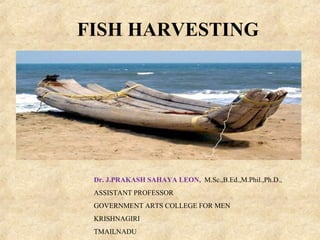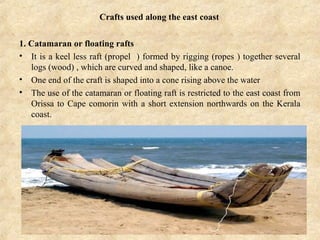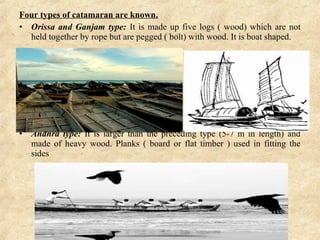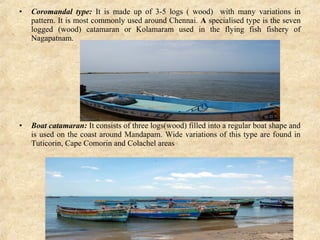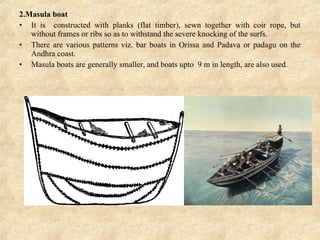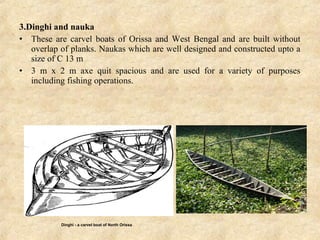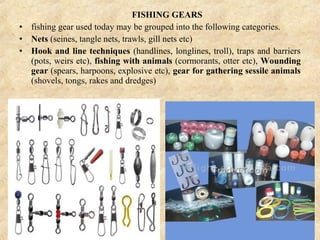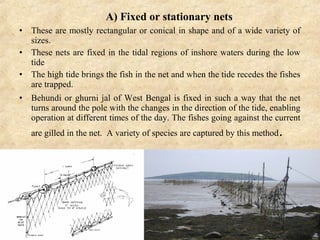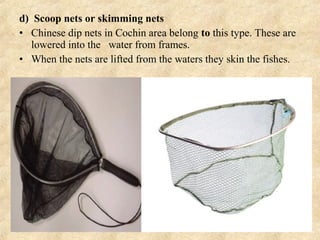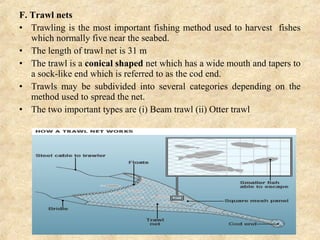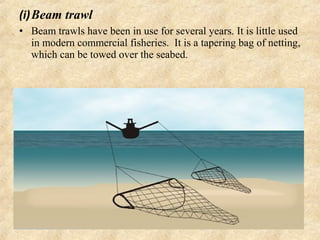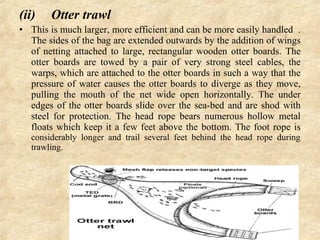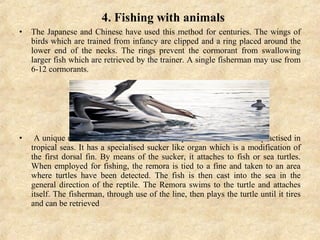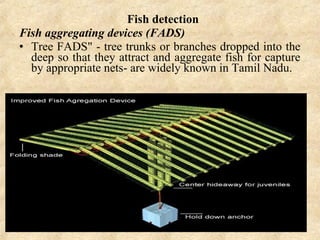This document summarizes traditional fishing crafts and gear used in India. It describes the main types of crafts used on the east and west coasts of India, including catamarans, masula boats, dinghies, and built-up boats. It also outlines the major net types like seine nets, drift nets, trawl nets, and hook-and-line techniques like hand lines, pole-and-lines, and long lines. The document provides detailed descriptions of fishing methods and how specific gears are constructed and operated to catch different types of fish.
